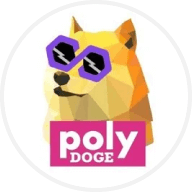La aparición de Ethereum revolucionó el mercado de las criptomonedas, preparando el camino para el desarrollo de aplicaciones descentralizadas (dApps). DappRadar (RADAR) es una plataforma dedicada a ofrecer información valiosa sobre el mundo de las dApps. Al proporcionar datos y análisis exhaustivos, DappRadar aspira a aumentar la transparencia y capacitar a los usuarios para navegar por el panorama en rápida evolución de las aplicaciones descentralizadas.
Qué es DappRadar
DappRadar es una plataforma basada en blockchain que ofrece datos y estadísticas precisos y puntuales sobre el mercado de dApps. Con la misión de combatir la información engañosa, DappRadar ofrece a los usuarios un sitio de agregación de datos de mercado fiable y completo.
Los datos de DApp proporcionados en DappRadar se presentan en clasificaciones y carteras, dependiendo del tipo y la naturaleza de la dApp. La plataforma también ofrece información sobre los tokens no fungibles (NFT) y el gran mercado de las finanzas descentralizadas (DeFi).
El equipo de DappRadar
DappRadar fue fundada por Skirmantas Januśkas y Dragos Dunica, que ejercen como director general y director de datos, respectivamente. El proyecto basado en blockchain también cuenta con el experto en criptomonedas y blockchain Patrick Barile (director de operaciones) como parte del equipo fundador. DappRadar cuenta con el respaldo de algunas de las principales empresas de capital de riesgo del sector, como Blockchain Ventures, Nordic Ninja y Prosus Ventures.
Cómo funciona DappRadar
DappRadar opera a través de un sitio web fácil de navegar y completamente gratuito. Su accesibilidad lo ha posicionado como una herramienta indispensable para los operadores deseosos por obtener una comprensión más profunda del emergente mercado de aplicaciones descentralizadas (dApp). Con su enfoque global y su naturaleza descentralizada, la aplicación DappRadar aporta numerosas ventajas a sus usuarios.
Uno de los puntos fuertes de DappRadar es su flexibilidad. Los usuarios tienen la capacidad de rastrear sin esfuerzo y de forma segura más de 3.000 dApps a través de una amplia gama de blockchains. Además, la plataforma ofrece una función de seguimiento del portafolio que permite a los usuarios controlar sus ganancias y pérdidas diarias, así como una visión general de sus participaciones.
El token nativo de DappRadar: RADAR
Lanzado en 2021, RADAR es el token nativo del proyecto. Se diseñó para permitir a los usuarios acceder a todas las interesantes funciones de la plataforma. RADAR también sirve como token de recompensa que se repartirá proporcionalmente entre los miembros de la comunidad por su contribución al crecimiento de la plataforma.
Además, RADAR es la base del ecosistema de la organización autónoma descentralizada (DAO) DappRadar, actuando como un token de gobierno.
Tokenómica de RADAR
La oferta total de tokens RADAR es de 10.000 millones, adheridos al estándar ERC-20 en el blockchain de Ethereum. RADAR desea fomentar el compromiso de la comunidad y ofrecer incentivos para la participación activa, garantizando un ecosistema vibrante y sostenible para todas las partes interesadas.
Cómo hacer staking con RADAR
El staking es un aspecto importante del ecosistema de DappRadar. Permite a los poseedores de tokens obtener recompensas específicas por bloquear fondos durante un periodo. Usted puede hacer staking con RADAR como miembro regular o como miembro PRO, lo que significa que tiene la opción de comprometer un mínimo de 5.000 y 30.000 RADAR, respectivamente.
Para empezar, visite el sitio web de DappRadar. Vaya a la pestaña "Staking" y elija la opción de afiliación que prefiera. Conecte su billetera a la red, seleccione la cantidad de RADAR que desea colocar en stake y finalice el proceso. Una vez completado, puede empezar a ganar recompensas como miembro de DappRadar.
Casos de uso de RADAR
RADAR concede a los titulares acceso a las funciones de la plataforma, sirve como pago por transacciones, permite a los desarrolladores crear aplicaciones y ofrece derechos de voto en el ecosistema.
Distribución de RADAR
RADAR se distribuye de la siguiente manera:
- El 40% se asignó a miembros leales de la comunidad.
- El 25,25% se reservó para el equipo y los accionistas de DappRadar.
- El 24,75% se destinó a la tesorería de DappRadar, que cubre los gastos de desarrollo, recaudación de fondos, asociaciones y mercadeo.
- El 10% se distribuyó durante el proceso de airdropping inicial.
El futuro de DappRadar
DappRadar se dedica a garantizar la sostenibilidad de su plataforma mediante la entrega constante de mediciones de mercado valiosas y precisas a desarrolladores, usuarios y partes interesadas en el mercado emergente de dApps. DappRadar pretende convertirse en una fuente de información fiable y de confianza mediante el suministro de información detallada, gráficos, estadísticas y datos. La plataforma también se esfuerza por adaptarse continuamente a las tendencias del mercado y mejorar sus servicios, garantizando su relevancia y utilidad a largo plazo.














Sociales